Democratic Republic of of Vietnam; Ho Chi Minh; September 2nd., 1946 (Michel VM Nr.56-60); These were the first stamps entirely designed by the Viet Minh. Prior to 1946 the Viet Minh used either Indochinese stamps or simply over-printed them with the new country name and/or values. The territory fully controlled by the Viet Minh was still very limited and general postal volume small in the fall of 1946 so postal usage of these stamps was also extremely limited. These stamps were for the first time originally denominated in the currency “Dong” that was first issued by the Viet Minh in 1946 (1Dong = 10 Hao = 100 xu) replacing the Indochinese stamps by the French Colonial regime that used Piastres and Centimes. All previous Viet Minh stamps in Xu and Dong were simply overprinted on old Indochinese stamps.
Here is the 100D banknote issued in 1946
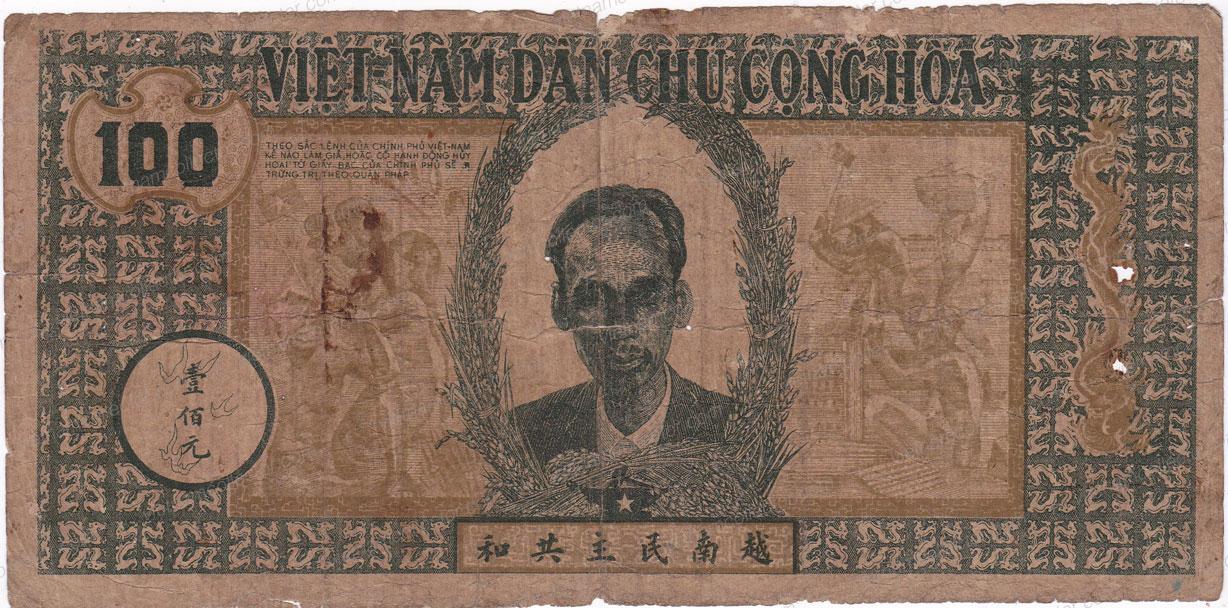
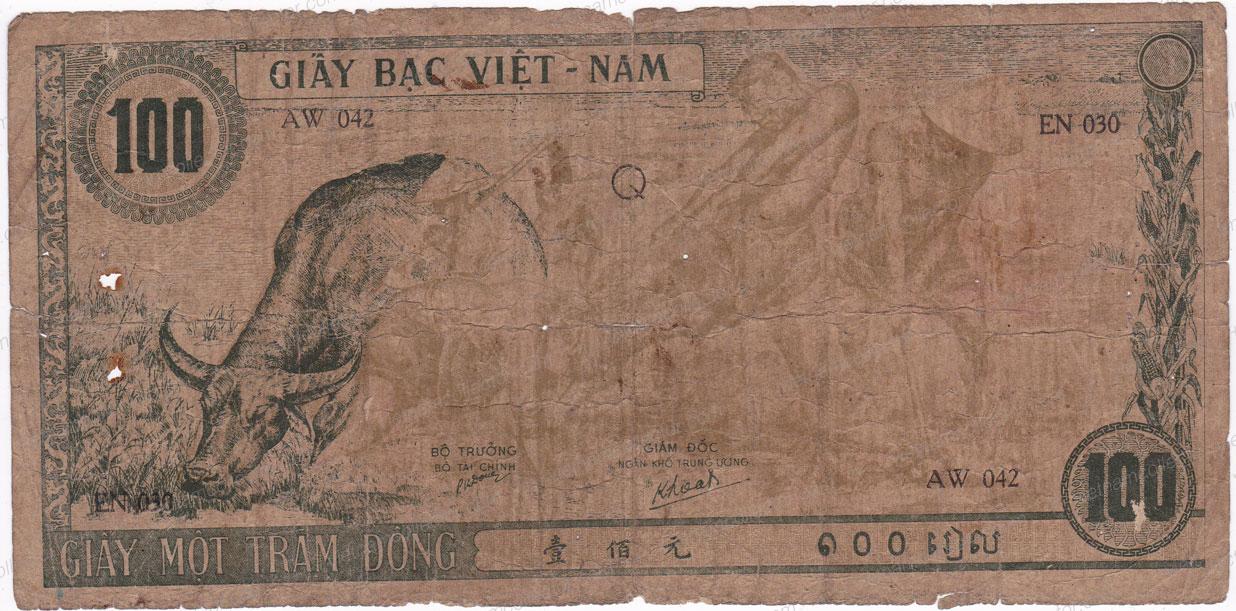
They most often appear mint and more rarely in cancelled to order condition. Postally used copies are extremely rare. There are also some philatelic covers that bear these stamps. Very few genuine postally used covers survive today and therefore they are extremely rare and expensive. The stamps were produced in panes of 50. Below are scans of complete sheets of all three values issued without surcharge:
1 Hao yellow-green (Michel Nr. 56)
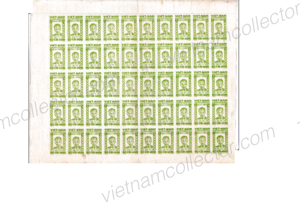
3 Hao red-orange (Michel Nr. 57)
9 Hao yellow, ochre (Michel Nr. 58). A plate error exists on a partial printing of the 9 Hao value (Position B5) in which the 9 is broken just low the loop. The sheet below does not show this error.
Here is a single mint copy of the error stamp with the “broken 9” plate error.
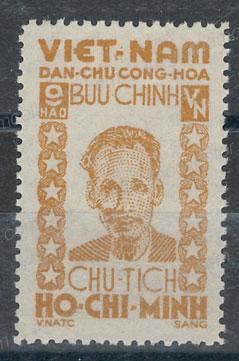
The Viet Minh also issued two surcharged values that were supposed to benefit the defense of the country (4 Hao blue-green plus 6 Hao and 6 Hao grey-brown plus 9 Hao), but given the poverty of the population they found very little postal use. Michel reports that the 6 Hao plus 9 Hao value comes in two plate versions. The new plate is by 1mm larger than the old plate. Below the stamp in the middle is the first printing and the stamp to the right represents the larger stamp.
Below is a complete mint pane of the 4 Hao surcharged value. 4 Hao, blue-green, with 6 Hao surcharge (Michel Nr. 59)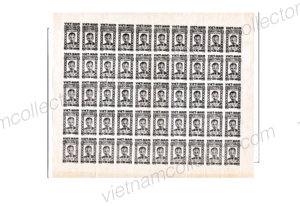
The stamp in position C10 (or the 30th stamp from the top left) shows the plate error “white dot over O of HAO and broken A of HOA”.
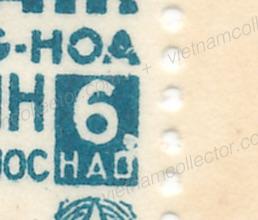
The Viet Minh postal tariff from 1945 through 1951 is still not completely defined as so few pieces of postal history have survived the ravages of time and no genuine official postal bulletins have been found yet. While fellow SICP member Jean Goanvic (www.histoire-et-philatelie.fr) has done a remarkable job in defining postal rates throughout this time period there are still a number of open questions as to when exactly tariff changes occurred. The table below was taken from Jean’s website and represents the inland tariff for a standard 20 gram letter. Tariffs that show two question marks behind them are highly uncertain as they are based on a single surviving letter.
ÉVOLUTION DES TARIFS DE LA LETTRE SIMPLE INTÉRIEURE DANS LES ZONES DE LA VNDCCH
DU TONKIN ET NORD-ANNAM
PÉRIODE
Décembre 1945 à début 1947
Début 1947 à début 1948
printemps 1948
2ème semestre 1948
Printemps 1949 à début 1950
2ème semestre 1950
4ème trimestre 1950
fin 1950 début 1951
fin mars 1951
août 1951
avril – septembre 1951
fin 1951-15 mars 1952
What becomes clear in this listing is that inflation in the Viet Minh territory was rampant and hence required frequent changes in postal rates. The problem with that was, however, that the Viet Minh, being an underground army, had very few means to produce stamps in these new nominals due to a lack of firmly held territory, printing equipment and raw materials. An interesting aspect of Viet Minh postal history, that was not understood for a long time, is therefore the fact, that some of the early stamps (Michel Nr. 1 through 60 Democratic Republic of Vietnam and Michel Nr. 1 through 3 North Vietnam) were uprated by 10:1 or even 100:1 in order to meet new postal rates. Only North Vietnam Michel Nr. 2 and 3 were produced in the underground (witness the primitive paper, print and perforation) while all other stamps until then were still produced prior to the “Clash of Hanoi” on December 19th, 1946 when the Viet Minh were either in full control Hanoi or tolerated by the French. This latter is also evident in the quality of the stamps and overprints.
Here is a piece from a letter bearing a rare mixed franking of Michel Nr. 56, 59 and 2b used during the first Indochinese War. It was cancelled on June 17th, 1951 in Ha Giang, the far north of Vietnam along the border with China, which at that time was already fully controlled by the Viet Minh. In this case the 1 Hao stamp (Michel Nr. 56) was uprated by a factor of 100 so representing a value of 10D. The surcharge 4 Hao + 6 Hao stamp (Michel Nr. 59) was uprated by a factor of 10 so representing also a value of 10D (here the donation surcharge of 6 Hao was considered as valid postage) and the 2D stamp (Michel Nr. 2b) was also uprated by a factor of 10 so representing a value of 20D at the time of mailing. Overall the franking hence amounted to 40D which was the standard letter rate in June of 1951. While the Viet Minh did not bother to formally surcharge the stamps with the new value, the purchase price at the post office was, of course, adjusted. The uprating factor is solely recognizable by the date of the cancellation which represents another problem. Early Viet Minh cancels did not feature an adjustable date line. The cancels simply had an empty field in the center in which the postal clerk was supposed to enter the date. This was often omitted or only day and month (but not the year) were inserted, making it very hard to properly date early Viet Minh postal history. In some cases letters were not even cancelled as they were transported by private couriers.
Very rare postally used stamp cancelled by a Nha Nam Buu Dien Cuc canceller.
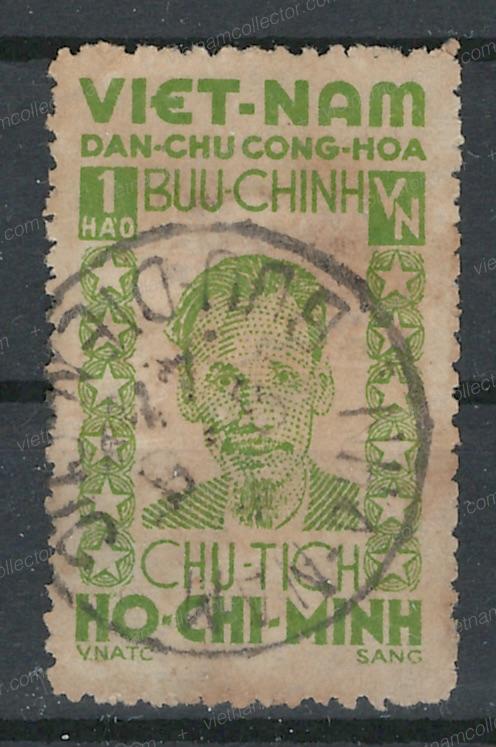
P
Very rare postally 3 Hao stamp used in Hanoi in September of 1955.
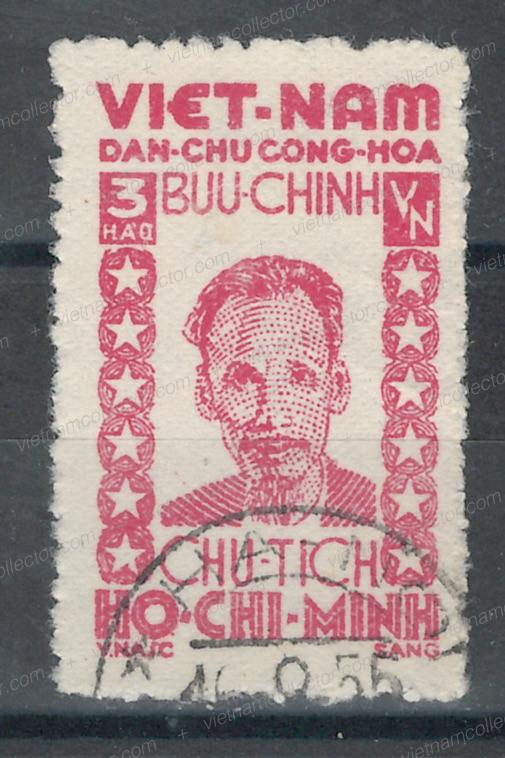
Cancelled to order set carrying the Tourane (Da Nang) cancel from December 11th, 1946.
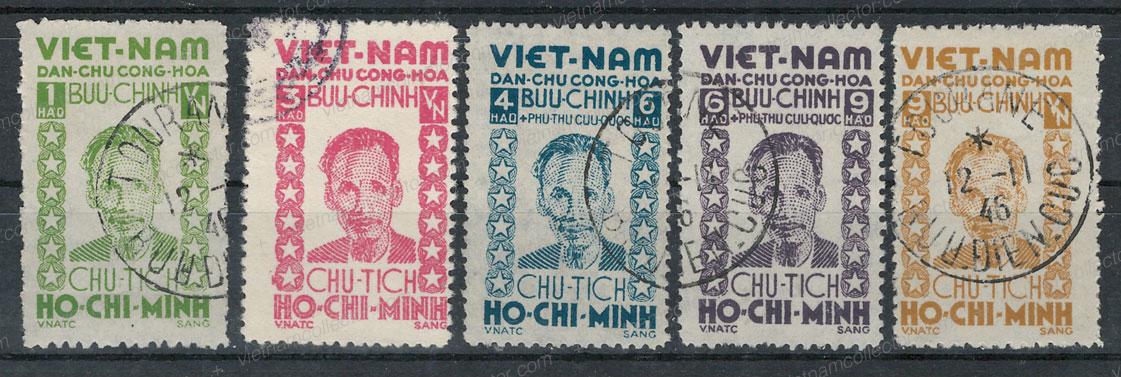
Favor cancelled blocks of four that were cancelled to order with the “Hanoi Chanh Thau Cuc” cancel probably on October 21st, 1946 (no year inserted).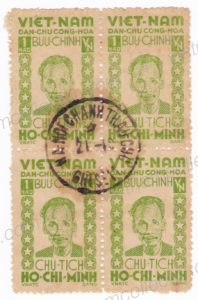
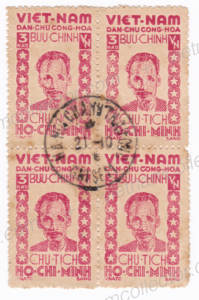
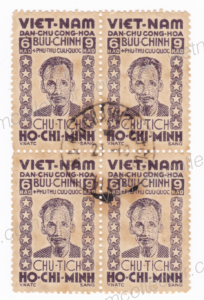
Postally used 9 Hao stamp making up the registered letter rate on a piece used in Tourane (Da Nang) in December of 1946.
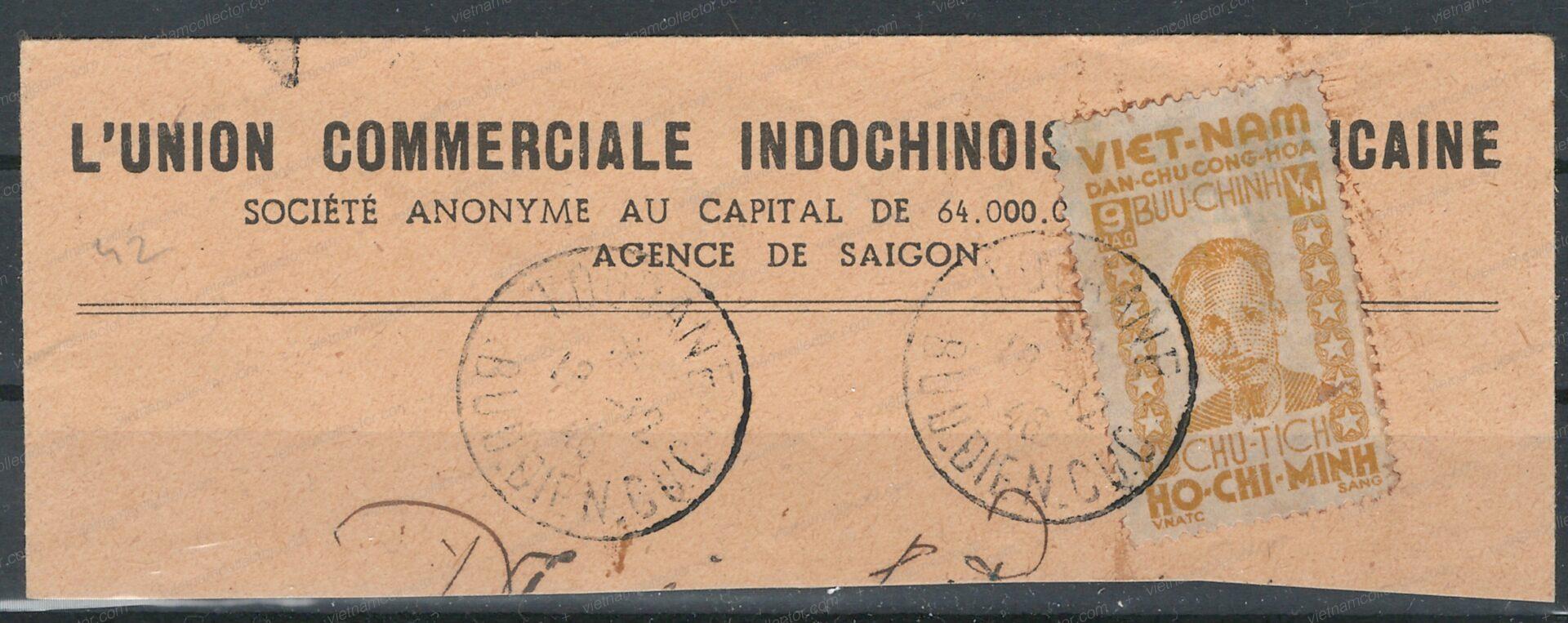
Single 3 Hao stamp cancelled with a rare red military cancel. Note that the date line in the center of the cancel was not filled in by the postal clerk.
Philatelically inspired cover bearing all values of the series cancelled in Tourane (Da Nang) on November 11, 1946.
Philatelic letter prepared by “Maison Vietnam Philatelique” using one of the 9 Hao HCM stamps along with some Viet Minh overprints. The letter was cancelled with the Hanoi Trung Uong Bac Bo canceller on November 8th, 1946.
Very rare local letter front that is of military origin. The “T.B.S.” on top left stands for “Thu Binh Si” or “Military Mail”. It was sent by a student at Le The Hien High School in Truong Thuy in Cam Lo District located in Interzone IV to Quang Binh in the Red River Delta. The red circular “IV5” documents the origin of the letter to Interzone IV. The recipient was Tran Yet of Company 34, Artillery Battalion 888, Regiment 18 in Quang Binh.The letter was cancelled by a black circular cancel on which the postman was supposed to enter the date manually but this often did not happen. Given the 1 Hao franking along with the manuscript censor marks (red crosses) the letter most likely was sent in the second half of 1950 and it represents a one hundred uprating of the 1 Hao stamp to 10 Dong. Inflation was rampant in the territory controlled by the Viet Minh and the Viet Minh Government did not have the resources to re-print stamps continuously and hence simply sold stamps at multiples of 10 to 100 tims of the actual face value.
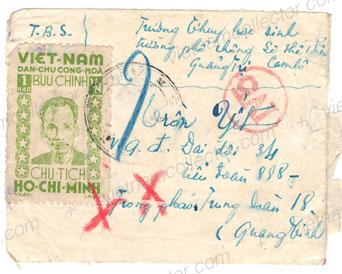
Very rare local letter franked correctly with 3 Hao mailed in Tourane (Da Nang) on December 1, 1946 (just a few days before the Viet Minh uprising against the French in Hanoi on December 19th, 1946)
Exceedingly rare Viet Minh letter using a home-made adversity envelope mailed on March 28th of 1950 from Than Nguyen to Haiduong. While franked with only 9 Hao the stamp was actually sold up-rated 10:1 so was worth 9 Dong on the day of sending. This is the only cover known to exist that documents the 9 Dong rate that was in force for only a short time between the 1st and 2nd quarter of 1950.
Sample of the 1 Dong banknote issued by the Viet Minh in 1947, when they were basically being tolerated by the French colonial force.
Front
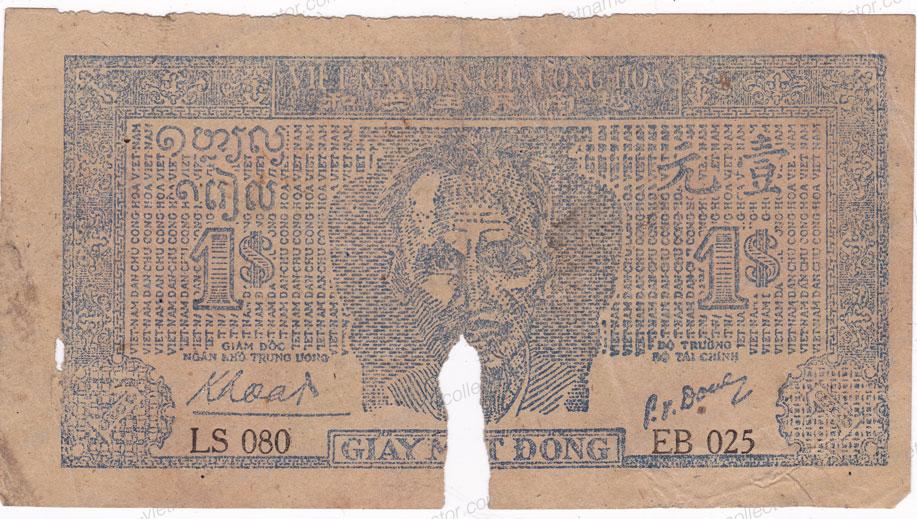
Reverse
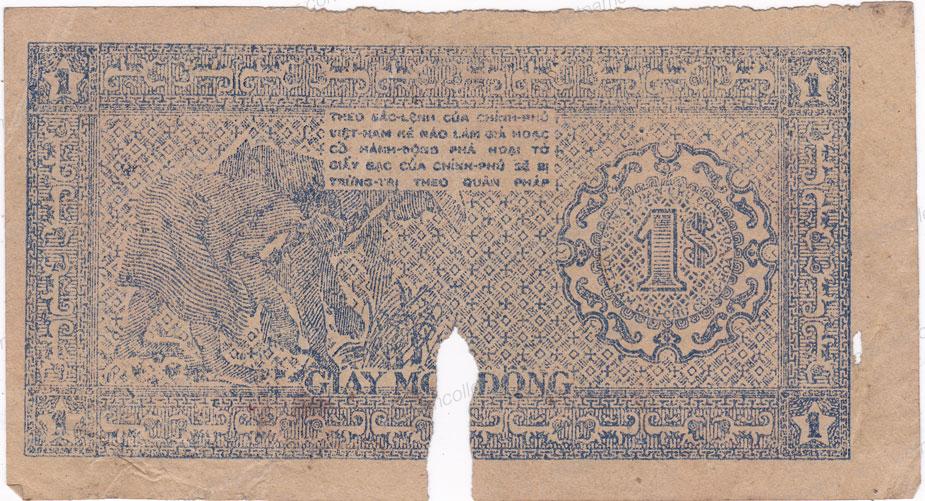
Sample of the 5 Dong banknote from 1947
Front
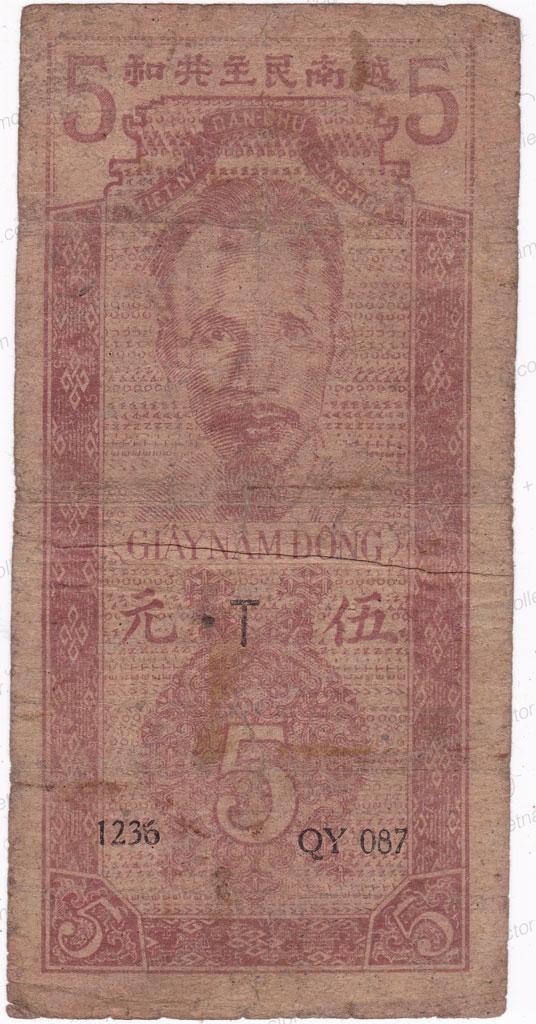
Reverse
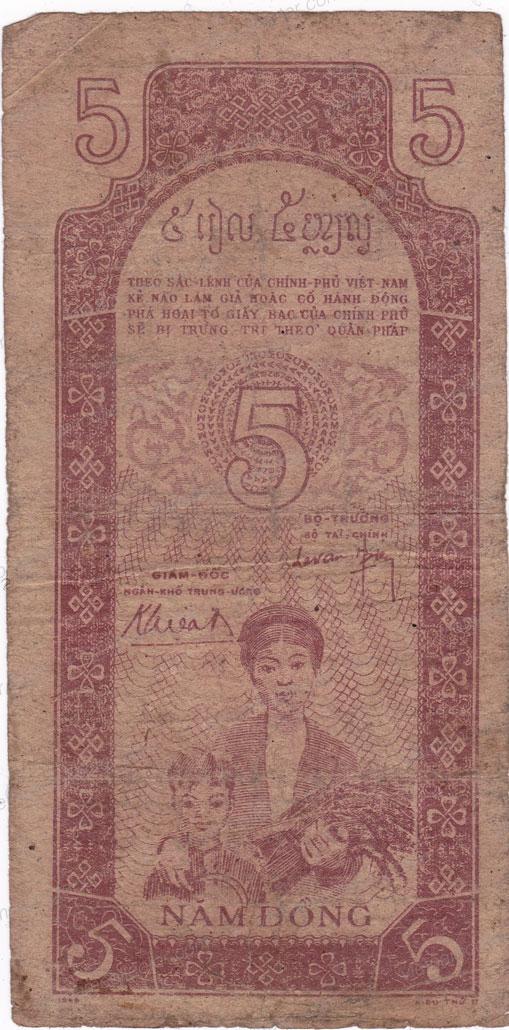

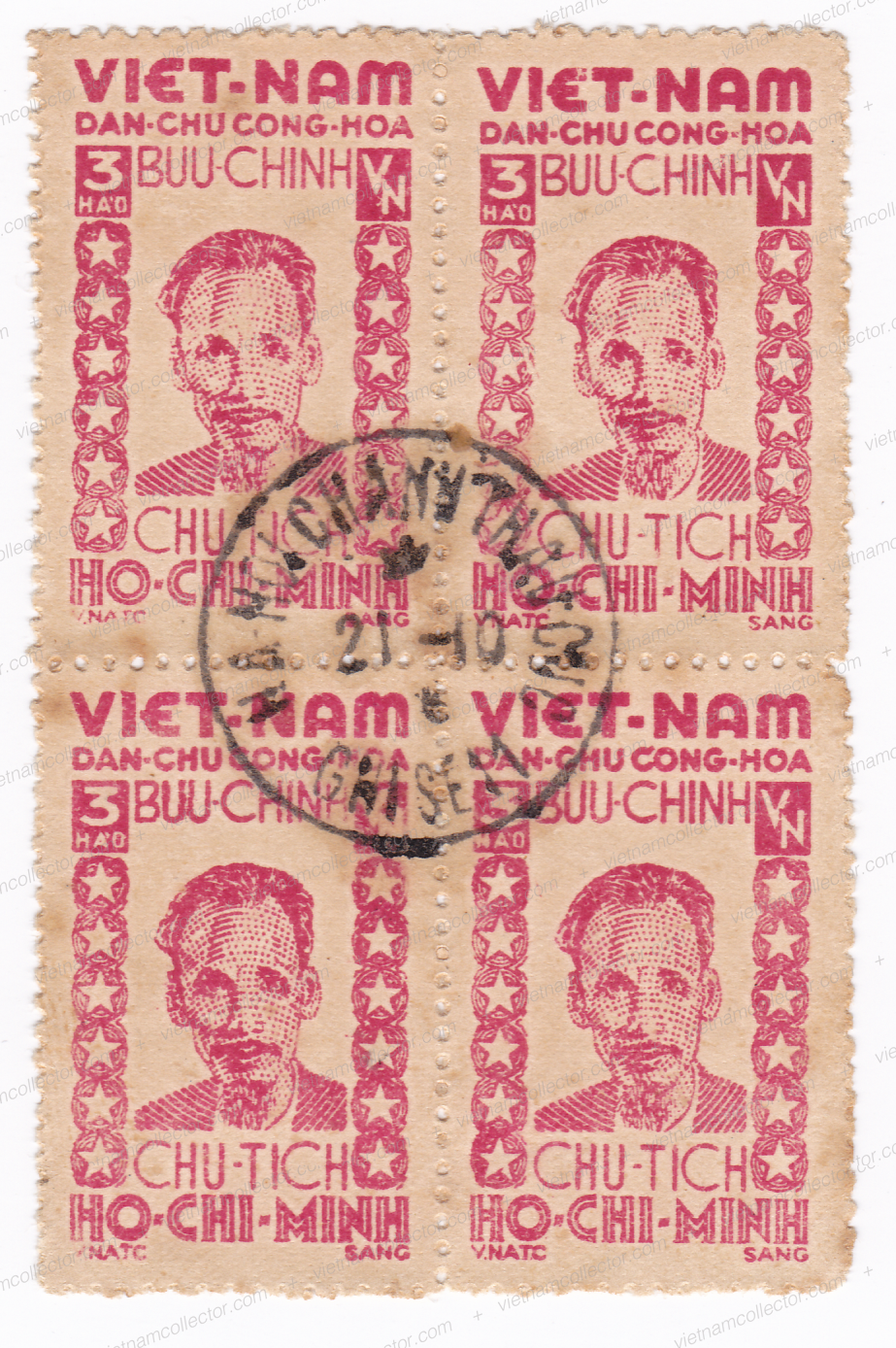
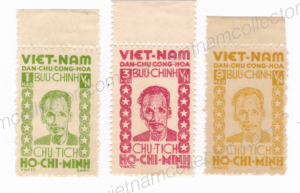
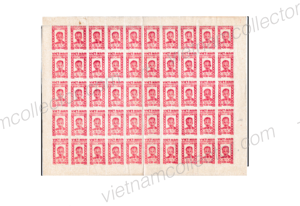
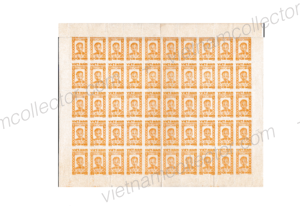
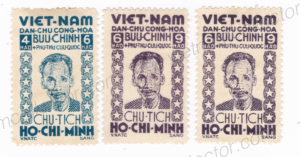
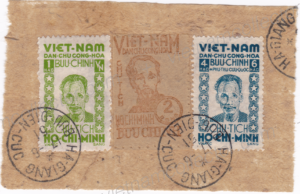
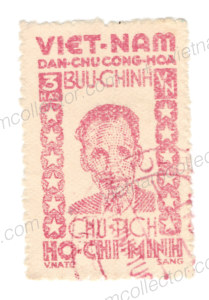
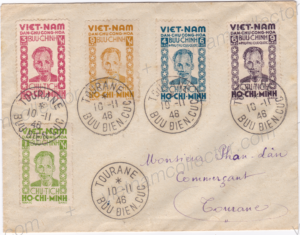
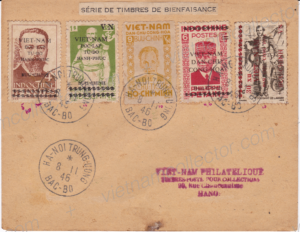
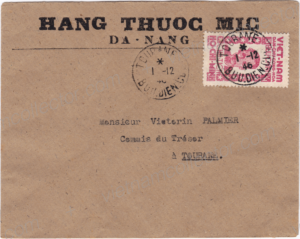
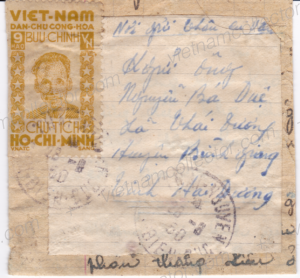
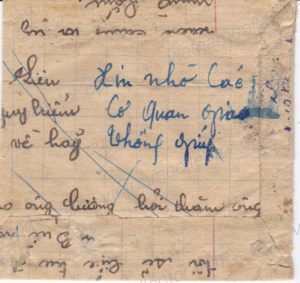
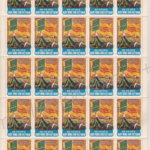
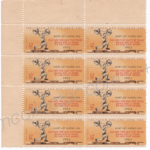
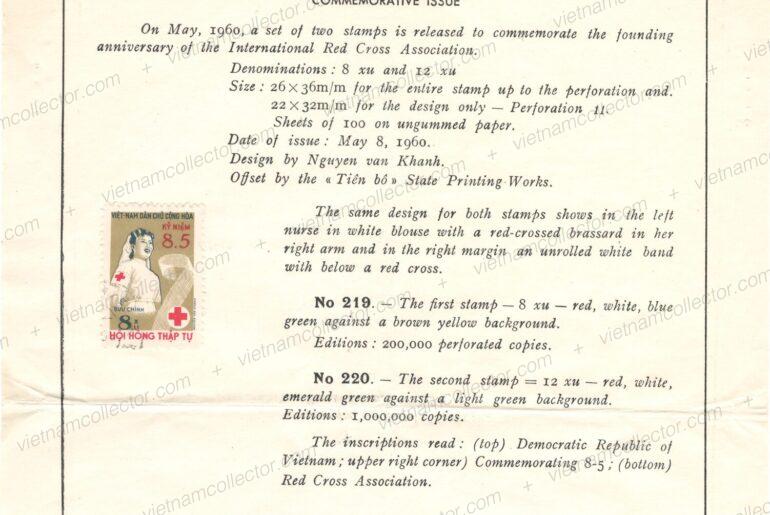
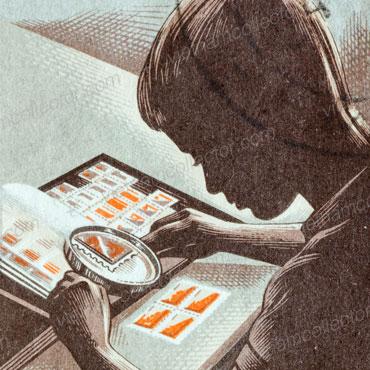
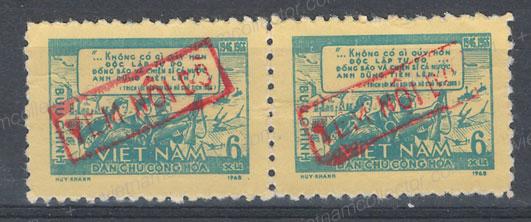
Comments are closed.